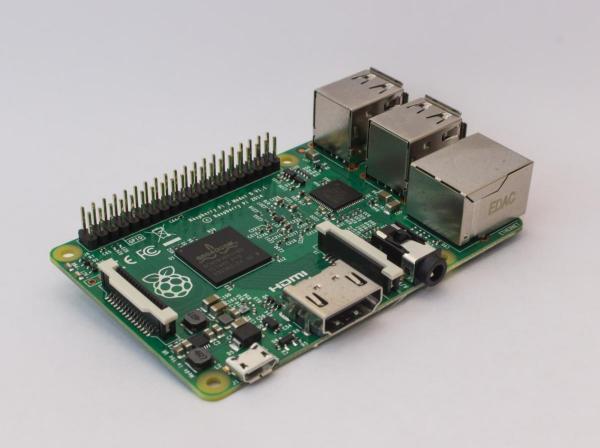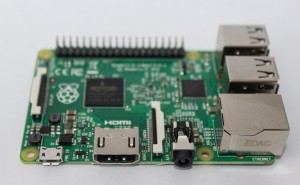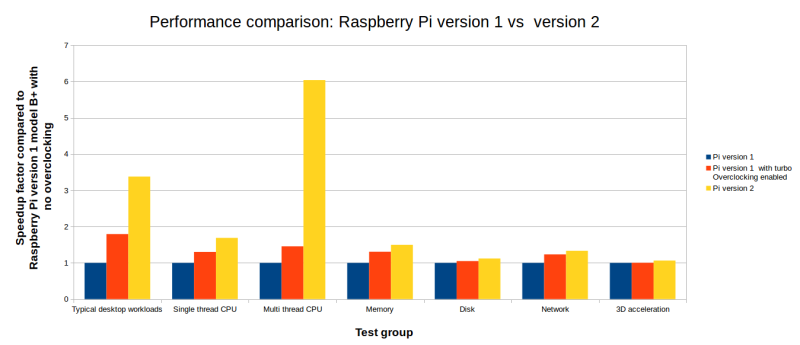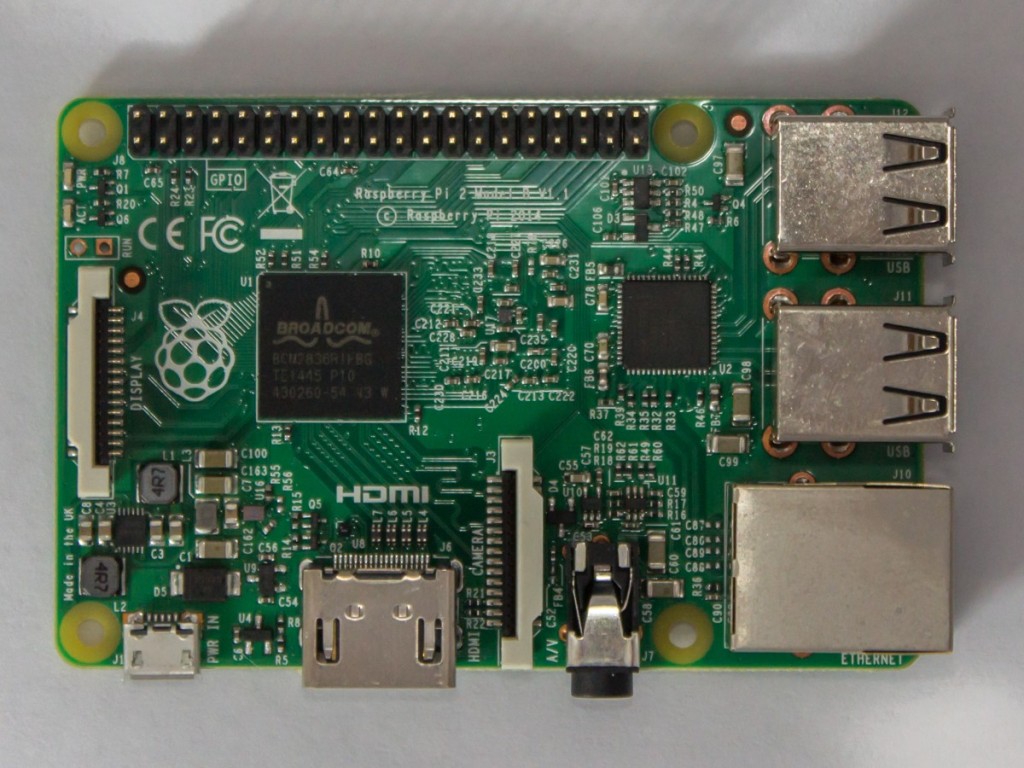Raspberry Pi Version 2 performance
This morning, the Raspberry Pi Foundation have announced a brand new version of their small board computer, the Raspberry Pi Version 2 Model B. This is the first version to feature a new processor and new memory, but it remains completely compatible with older boards, and has the same form factor as the Raspberry Pi Version 1 Model B+. It’s also the same price as the old Version 1 Model B+ ($35).
The new board features a quad core ARM Cortex A7 SoC and 1GB of RAM (now mounted on the bottom of the PCB rather than ontop of the SoC as in previous versions). Otherwise, the board remains unchanged from the B+. That means, it features 40 GPIO pins (26 of which are useable), 4 USB ports, a Fast Ethernet port, HDMI output, audio and analogue video on a 4-pole jack and a micro USB port for power.
The new board is 100% compatible with the version 1 B+. That means any software that ran before should still run, and any expansions that used the GPIOs should still work without problems. You will need to grab the latest version of Raspbian, but otherwise you can just swap the new board in as a direct replacement.
We’ve had one of the new boards for a few days and have been putting it through a series of gruelling benchmarks to find out exactly how it compares to the previous version.
As you can see from this graph, the multi-threaded CPU intensive benchmarks ran far faster than on the previous Pi: about 6 times faster than the version 1 Pi without overclocking, and 4 times faster than the version 1 Pi with turbo overclocking enabled. This is compared to a B+, but the results should be the same for all previous versions of the Pi as they had the same SoC.
These multi-threaded benchmarks were specifically designed to split the load up well across many processor cores. In real life, not all processing tasks do, so we also ran benchmarks for singe-threaded tasks. In this case, the new Pi ran about 1.7 times the speed of the old version, and still noticeably faster even when the version 1 Pi had turbo overclocking enabled.
To get a feel for how the new model performed normal tasks, not just articifial benchmarks, we also timed a series of normal computing tasks, like installing software, starting a work processor and opening a complex spread sheet. These came together to form the typical desktop workloads benchmarks. As you can see on the graph above, the new Pi dramatically out performed the old Pi at these.
The new memory is clocked slightly faster than on the old version, so that accounts for the difference in the memory benchmark (it didn’t take into account the larger size). Increasedencryption performance of accounted for the majority of the difference in the networking benchmark as it included a test for secure transfer.
The new Pi uses exactly the same VideoCore IV GPU as the previous model, so there is no significant difference in 3D performance or capability.
Benchmarks are good indicators of performance, but they’re rubbish at detailing how a computer feels. The multi-core SoC and increased memory means the new Pi is much more suited to desktop use than it’s predecessor. Switching tasks is now much snappier, and browsing the web is no longer an exercise in frustration. It’s a great upgrade, and since it retains the same price as the old Version 1 Model B+ ($35), it represents fantastic value for money.









I find it a bit sad that the Rb Pi foundation promotes Windows 10 and that all the media focuses so hard on it.
I think for an educational device a open-source or better a free operating system is the much better choice.
MS is providing a free version of windows 10. MS has been making huge strides into the open source world. Nearly all of .net is open source now (asp.net, the .net compiler etc). They have free versions of visual studio available and they allow free use of azure for testing.
Does it still require a micro SD card to boot from? That has proved to be the weak point in my Raspberry Pi, the cards wear out too quick or get corrupted.
I feel sad as well regarding the tie in with Windows 10. Raspbian was tailor made for encouraging kids into Linux. I know majority of schools will go for Windows as teachers find Linux intimidating and never want to look stupid in front of their pupils.
Windows 10 is being given for free. There’s a reason for this. We’re coming to the death of OS’s. My wife teaches children on Chromebooks. Simply put… Everything they could ever need to do can be done from a web browser. I think this is a thing you should embrace. Its a good thing for Linux. I think in the future your OS choice will be much like the difference between choosing a Toshiba vs Sony laptop. Its a personal choice that ultimately doesn’t affect your ability to collaborate electronically with your team. In other words.. When you start a job… They’ll ask “do you want windows, Ubuntu, Mac os, or chrome os”.
Umm guys, Windows 10 will be free for the pi, plus it’s far from the only OS being promoted (in the pi blog they mention they’re updating Raspbian).
In fact, reading through the Windows 10 info so far, they’ve not decided whether it’ll even have a gui yet or not, so it doesn’t sound like it’ll be just another Windows device.
On topic, those benchmarks look pretty impressive, and if it has a generally snappier feeling then I’m there!
Microsoft is a for profit company, so you have to ask, what’s their angle? For how long is it going to be ‘free’ and is it really ‘free’ or is there some end user agreement now or in the future that will magically make all software that uses it belong to Microsoft? You’ve seen the small print that says your continued use constitutes your agreement and the terms of the agreement can change at any time without notice. When will they slip in something sinister? After they squash the competition, as usual.
Did you recompile the binaries on RPI2 for ARMv7? Certainly for tasks like multimedia processing and other mass data manipulation you will see an advantage in using things like the NEON support in ARMv7.
“The new board is 100% compatible with the version 1 B+. That means any software that ran before should still run, and any expansions that used the GPIOs should still work without problems.” —Sadly, not true. The memory location of the GPIO ports changed in the Pi 2. As a result, most software that uses the GPIO ports won’t work on the Pi 2 until it’s rewritten for the new system. That includes the popular RPi.GPIO Python library, which has yet to release an official update supporting the Pi 2. If you’ve used your original Pi B+ to do hardware projects, be aware that the Pi 2 is NOT a drop-in replacement!